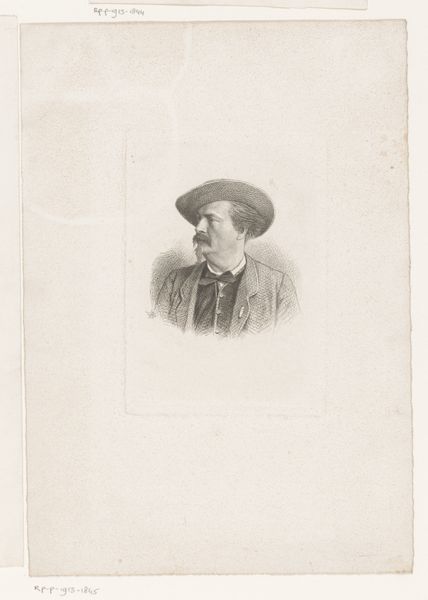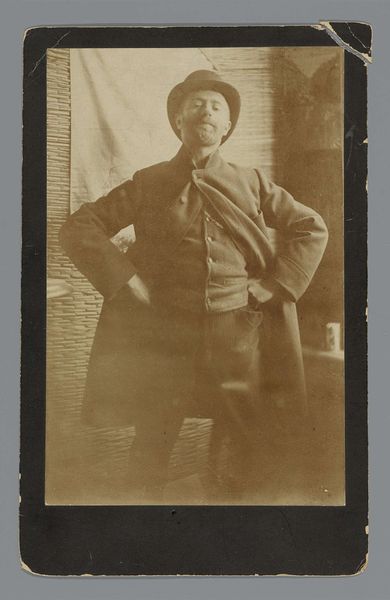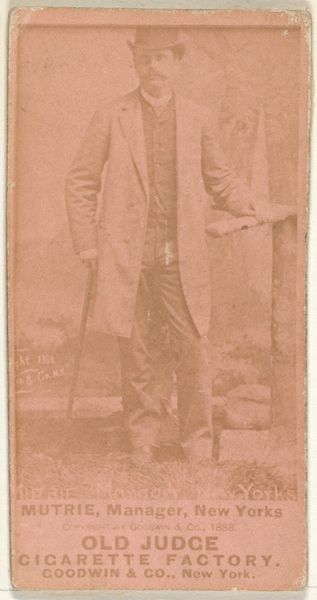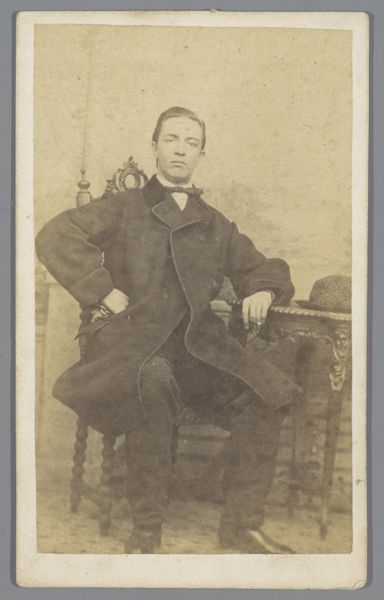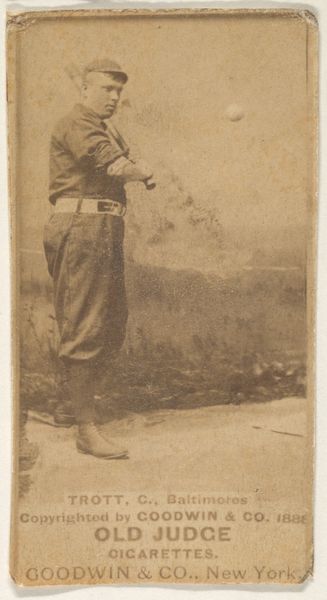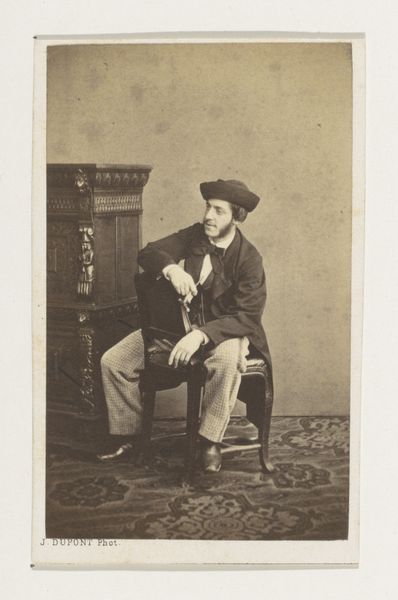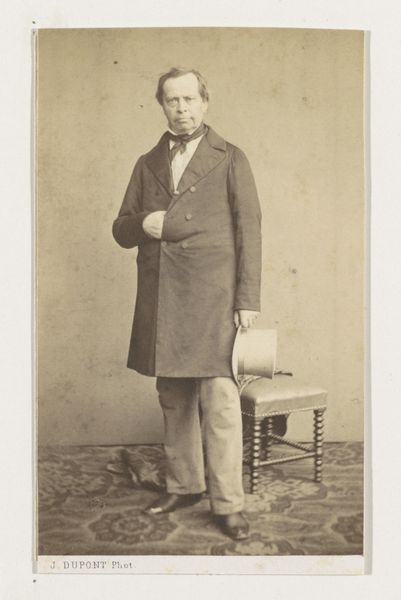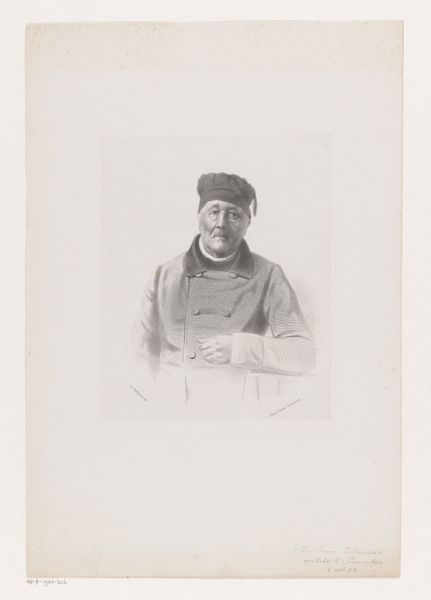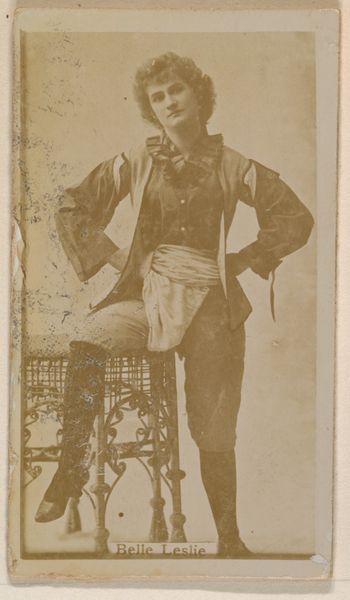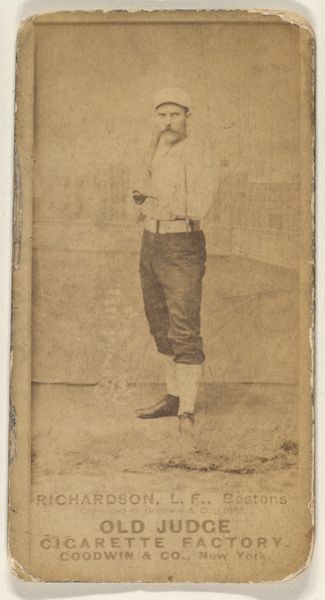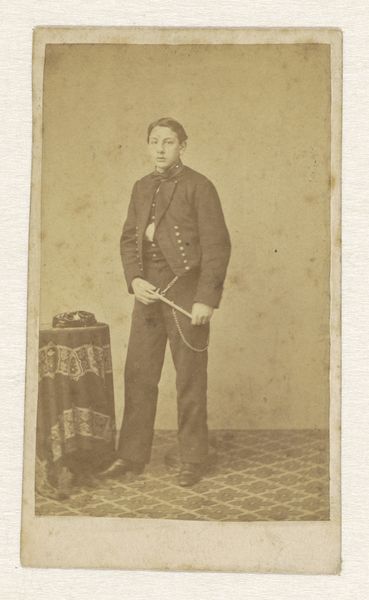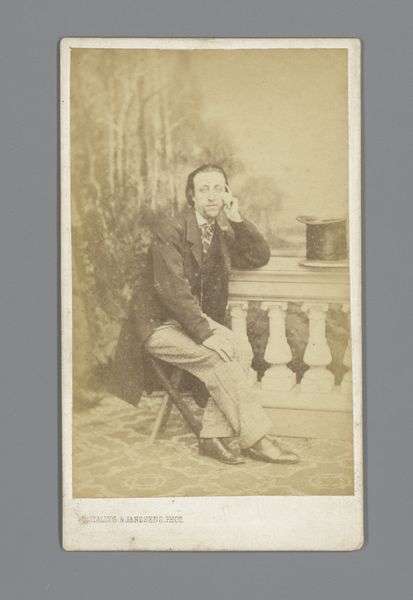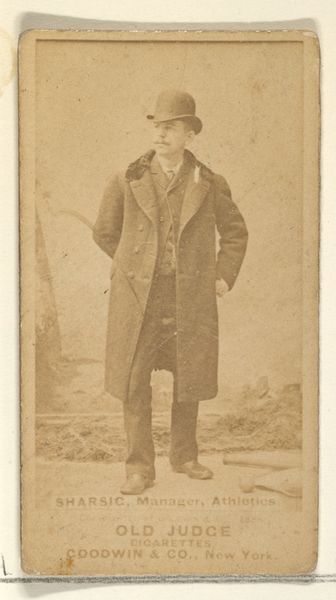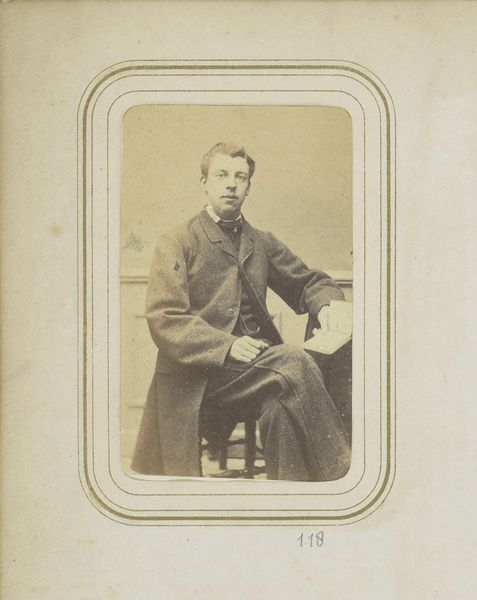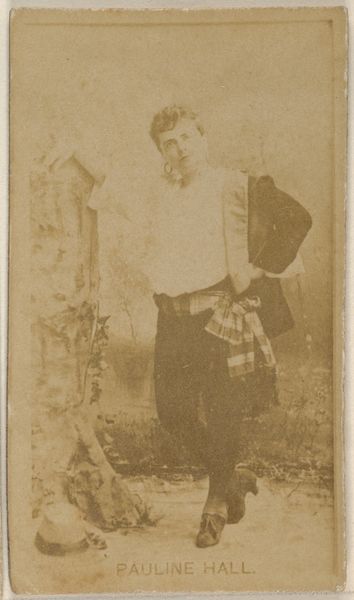
paper, photography
#
portrait
#
16_19th-century
#
paper
#
photography
Dimensions: 22.2 × 16.3 cm (image/paper/mount)
Copyright: Public Domain
Curator: This captivating photographic portrait, housed here at the Art Institute of Chicago, is entitled "Bayard, les yeux Fermés," or "Bayard, with Eyes Closed." It was crafted by Hippolyte Bayard, possibly sometime between 1842 and 1865. Editor: It feels almost dreamlike, doesn't it? The muted tones, the way the subject seems to be at peace. There's a softness, despite the medium. I'm struck by his expression. Curator: The historical context is really interesting. Bayard, a pioneer in photography, staged this after feeling slighted by the French government's recognition of Daguerre. He almost seems to be using this portrait to explore ideas around visibility and political power. Editor: Ah, so there’s an undercurrent of resistance. Seeing it through the lens of social and political injustices, I wonder if his closed eyes are a metaphor for those who are willfully blind to the struggles of others. It also forces a discussion on the gaze, who has the right to be seen and represented. Curator: Absolutely. And Bayard's technique is noteworthy. The piece is made on paper, typical for the time, and you can see in its age how photography itself was still very much in its early stages. The print is quite soft. Editor: And how can we think about vulnerability here, looking at the power dynamics embedded in the male subject, at the period in question, and taking note of its modern museum context. I love the shadow on the brick wall—it frames him, yet it could also be a cage. He's stuck. Curator: Indeed. The portrait encapsulates both a personal moment of introspection and a broader commentary on artistic recognition and social awareness. Editor: Looking at this from the present, in today's culture, I wonder if closing your eyes also symbolizes some type of protest, some statement, an action with underlying politics and implications that extend far beyond that initial intention. Curator: I think considering the interplay of social commentary and aesthetic composition certainly enhances our reading of the piece. It's more than just an image; it's a statement, embedded within its historical moment. Editor: Right. There's so much packed in there, just below the surface. Makes you think, doesn’t it?
Comments
No comments
Be the first to comment and join the conversation on the ultimate creative platform.
